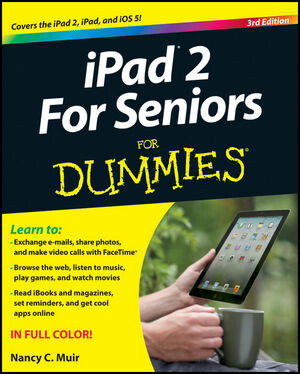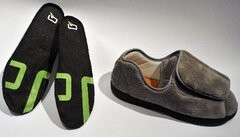The field of connected health has given birth to great innovations in areas such as self-tracking or preventive medicine. Another application that has developed greatly during the past few years is elderly care.
One of the challenges of elderly care is being as unobtrusive as possible. Perhaps the main goal of this branch of medicine is to enable people to remain at home for as long as possible before having to move to a specialized care facility. Connected technology offers a number of solutions for this.
The first step in the development of this technology has been to introduce connected devices, unrelated to healthcare, into the home of seniors. The iPad is probably the best example of a high-tech device that has been very successful among older people who are otherwise unfamiliar with computers and reluctant to use them. The iPad offers many apps and features that make it the perfect tool for seniors to keep in touch with their family, their community, and start using modern means of communication such as e-mail or Internet forums. A software like Skype has also made visio-conference user-friendly and easy to set up. At Withings, we have received feedback from some of our users explaining that they had gifted a Wi-Fi scale to an elderly relative who lives alone so that they can check every day if it has been used and make a phone call just to be safe if it hasn’t.

Dedicated health devices also gain benefits from becoming “connected”. For instance, people who suffer from Alzheimer disease can wear “wander management devices” that remotely alert their relatives or caregivers if something appears wrong. Medication dispensers help patient with memory loss to manage their schedule and make sure that they take all the pills they need in a timely fashion while connected cameras allow for even closer monitoring.
Those devices still rely on the help of relatives or caregivers though, but others can help seniors remain truly independent. Some manufacturers propose fall detection and prevention systems, like AT&T’s “smart slippers”, available since 2009, or sensors that monitor the status of kitchen appliances and safely shut them off if they are left unattended for too long. All those tools allow seniors to remain safely in their home and require less assistance live normal lives.

Cost is also a factor that fosters the development of connected elderly care. In most developed countries, the population as a whole is aging and the costs associated with elderly care are rising accordingly, while there are proportionately less people working and producing wealth to pay for it. Connected health offers several ways to reduce the costs while maintaining or improving the level of care. While connected health devices are generally more expensive than their regular counterparts, in the long term they allow the patient and the community to save money because they require less human intervention and can be deployed at home and not just in hospitals or specialized facilities. Not all countries however have recognized those benefits and assigned them a financial value, which partly explains why they are not as widespread as they could be.
Do you have relatives that could benefit from such devices? Can you think of other applications for connected technology in elderly care?


